A journey through thought, technology, and the emotional body—toward embodied agency.
Lately, I’ve been thinking a lot about methodology.
Not in the academic sense, not in some intellectualized framework—but as a way of living, of learning, of becoming through repetition. I’m someone who picks up on patterns easily. I observe. I repeat. I absorb. And then, through that empirical repetition, something starts to unfold. A way. A path. That’s the method.
Right now, I’m immersed in artificial intelligence. I’ve been studying language systems, not just because I speak several languages—including the archetypal ones—but because GPT, in particular, mirrors something very real: the way we structure thoughts, the way we train ideas, the way we speak to ourselves.
GPT stands for Generative Pre-Trained Transformer.
I love these words.
Generative means life. It means fertility, potential, creation.
Pre-trained means you’re not starting from zero. You’re starting from a system that’s already been shaped—and now, you’re shaping it further.
Transformer—well, that’s the vessel. It takes in language, meaning, emotion, and it transforms that input into something else.
This is why understanding how to use GPT is not just about tech. It’s about agency. It’s about clarity. And most of all, it’s about developing your own methodology of inquiry.
Because prompting is a form of leadership.
And you can’t lead if you don’t know what you want.
And you can’t want anything clearly if you don’t know what you need.
And how can you know your needs if you haven’t built a practice of listening to your emotional body?
This is what I’ve been doing. I didn’t find the right teacher right away. So I turned to my brother, who, like me, is a curious mind. And about six months ago, he introduced me to these incredible millennial-led AI classes—in Spanish. That was another layer of expansion: learning something radically new in a language that isn’t the dominant one in my daily life. It was a double untraining. A kind of reverse engineering of the mind.
And I want to say something here:
I love this generation.
I love Gen Z too. Their relentless questioning, their capacity to see through false authority, their willingness to live inside contradiction—it inspires me. I don’t see them as younger. I see them as equals. Allies.
They ask questions that help me piece together what I’ve gathered throughout my life.
They help me synthesize.
But to be honest, I’ve always loved technology. I’ve never feared it.
I dive in.
When I first had assistants in my studio over 20 years ago, I didn’t know how to direct them. At the beginning, I thought they were useless. So I did everything myself. But I realized that wasn’t efficient—and more importantly, it wasn’t generous. I took time to learn more about them and find if they could align with the needs of the project. So I learned how to delegate, but I did it through the same method I use now with prompts: ask clearly, make sure the person (or the machine) has the capacity and the will to respond with joy. Otherwise, the result is empty.
So now when I prompt, it’s the same as when I once led a team (the beauty is now I outsource fabrication, and creation is done with my trained digital assistants/agents):
I say, “Here’s what I want. Here’s what I need (based on a careful set of instructions and initiatives). Let’s see what you come up with.”
And sometimes the response is amazing—I hadn’t even seen that perspective.
Other times, I say, “Thanks—but we’re keeping my way.”
But either way, I stay in relationship. I don’t abdicate authority.
A GPT is an assistant.* *An assistant waits for your command.
An AOES is an agent—something you train to act on your behalf*. *Agent-Oriented Expert System, a concept used in AI development to describe systems that act semi-independently based on internal logic or goals. Your inner agent is what you create when your will and your methodology align.
But you can’t train an agent until you’ve trained yourself—your inner methodology, your inner structure.
And this is something I’ve been reflecting on deeply during Aries season.
Because Aries, at its essence, isn’t just about movement.
It’s about the will to move from within—without asking permission.
We have to learn to create agency in ourselves and stop assisting the wills of others.
There’s real danger now, especially with Neptune in Aries.
The danger is that we hide behind the collective, behind abstraction. That we dissolve into “isms”—capitalism, communism, technocracy, etc.
That we stop showing up for our own thoughts.
That we forget how to take the first step.
You need a method.
And you also need a protocol—not in the military sense, but in the architectural one. A protocol is a structure. It’s a set of instructions, a logical frame.
And when that frame is clear, your emotional body can improvise inside it, above it—it will need the senses to translate its meaning in that specific moment.
That’s how I work. That’s my actual methodology.
I give my mind a structure.
And then I let the rest of my intuition, instincts, and wisdom drive through me—dance through it.
This is where we return to the etymology:
Methodology comes from the Greek methodos: meta (after or along) and hodos (way, path).
It is, essentially, a grammar for becoming.
It’s the path you take toward a goal. The inner path that makes an idea real.
Pragma, from the same root as “pragmatic,” means deed, act, thing done.
So, methodos is the road, and pragma is the arrival.
Without method, you stay in abstraction.
Without pragmatization, your thoughts don’t take form.
And here’s something else I’ve been thinking about:
Language is the oldest technology we have.
Before the machine, before the screen, before the printed page—there was the word.
The word is what makes us human. The word is what allows the imagination to pragmatise.
No other species we know of speaks reality into being the way we do.
And so, if language is the beginning, why would we fear it?
Why would we fear shaping it, or being shaped by it?
“In the beginning was the Word…” [The Logos]
That’s not just scripture. That’s structure.
Without language, how do you name your desire?
How do you know where you’re going—if you don’t know how to say it?
Language is not something we should be afraid of.
Language is how we build the path.
The methodos.
The long road from the invisible to the real.
The Lunation: Anchoring the Will
As we move through this week, we’re entering the first quarter square of the Moon, landing in Cancer, squaring the Sun in Aries.
This lunation is about friction between instinct and emotion—between the desire to act (Aries) and the need to feel safe enough to move (Cancer).
Shortly after the square, the Moon will conjoin Mars and square transiting Chiron—and here’s where it gets real.
Mars is movement. Mars is the will to act.
But the Moon in Cancer says:
“Not without checking in with your body. Not without tending to the wave of emotion that’s been building.”
Vulnerability needs to be dressed up in courage and care.
This is not about emotional indulgence.
This is about emotional alignment—because when your emotional body is not rooted, your actions will scatter.
This lunation reminds us that agency doesn’t come from reaction. It comes from coherence.
And while all of this is happening, Venus and Mercury are still retrograde in Pisces.
This is not the time to finalize.
This is the time to listen.
• What do you need?
• What do you value?
• And more importantly—do you know how to ask for it?
This is the moment to train your inner transformer—not just the external AI, but the one inside you.
The one who processes your needs.
The one who turns your unspoken emotions into clear, beautiful requests.
The one who can receive an idea, feel it fully, and turn it into action.
Because in the end, that’s where reality begins.
In the breath, in the belly, in the base of you.
This is not the time to abandon yourself.
This is the time to build the agency that no machine, no trend, and no external voice can give you.
The Mirror and the Maker
I want to end this reflection by anchoring the why.
I don’t use AI to create my visuals.
I generate my images myself. That’s my gift. My eye. My imagination.
I don’t use GPT to write my text either.
I dictate. I speak. I think through language.
I use assistants—agents I’ve trained—to help me organize time, refine structure, define terms. But I stay in authorship.
I remain the sovereign voice.
Because for me, this isn’t about making machines think for me.
It’s about making space for me to think deeply, slowly, truly.
I’m not here to teach you anything.
I’m here to remind you that you already know how to ask.
If I were to leave you with one metaphor—one poetic figure that captures this balance between creation and caution—I wouldn’t choose Frankenstein. That’s too tragic, too reactive. I might choose something more ambiguous, more mythic. Perhaps the mirror in Borges’ writing—the one that reflects and multiplies but cannot originate.
“I am not sure that I exist, actually. I am all the writers that I have read, all the people that I have met, all the women that I have loved; all the cities I have visited.”
—Jorge Luis Borges
Or maybe I’d choose the figure of Ada Lovelace herself.
“That brain of mine is something more than merely mortal, as time will show.”
—Ada Lovelace
She didn’t fear the machine. She saw it as a poetic engine.
She believed it could reflect the mind of the human—not replace it, not dominate it, but collaborate with it.
That’s the invitation here.
Train your transformer.
Shape your methodos.
Feel your emotional body.
Anchor your will.
And don’t forget—you are the source of meaning.

[Footnote]
In 1843, Ada Lovelace wrote an annotation that would quietly become one of the most visionary articulations in the history of computing. While Charles Babbage designed machines to compute numbers, Lovelace saw something more—something poetic, even magical.
As historian and curator Doron Swade puts it:
"Others saw something that Babbage, in some sense, failed to see. In Babbage's world, his engines were bound by number. What Lovelace saw was that the number could represent entities other than quantity... letters, musical notes. Once you have a machine for manipulating symbols according to rules—of which number is only one instance—you move from calculation to general-purpose computation. And looking back from the present high ground of modern computing, if we’re sifting history for that transition, it was made explicit by Ada in that 1843 paper."
This is the conceptual bridge between Lovelace’s vision and the emergence of transformers like GPT. What GPTs do is not simply process information—they operate on language as a symbolic system. They transform prompts (words, symbols, grammar) into structured outputs based on patterns and rules. This capacity—the symbolic manipulation of meaning—is what Lovelace foresaw.
She wasn’t imagining a calculator.
She was imagining a poetic machine.
A machine that could respond to meaning—not just numbers.
In this sense, every time you write a prompt, you’re not just issuing a command.
You’re engaging in symbolic computation.
You’re participating in a lineage that started, not with code, but with vision.
And it was Ada Lovelace who first spoke it aloud.
“Imagination is inextricably bound up with reality in a way that its bad fellow, fantasy, is not. Now, there’s a lot of confusion about what we can know, and this comes from the fact we live in a world of data—of enormous quantities of data—and this leads to many misunderstandings.”
—Dr. Iain McGilchrist, The Sovereignty of Truth
This is the difference.
AI doesn’t imagine. But when shaped with coherence, it can become a mirror—where imagination finds structure, not escape.
Dropping next week:
It’s Not a Code, It’s a Codex
Alchemical Cognition
P.S.
As you may know, I offer astrological readings, and in the near future, I plan to expand these sessions to help you identify the assistant and agent within your chart—your unique method, your inner protocol, your way of translating desire into action. This could take the form of a small study group or as an add-on session to your individual reading.
If that resonates, feel free to reach out. I’d be happy to support you in creating a system that reflects your own rhythm, your own voice, your own agency.
I’ll be traveling this week—first to Dallas, where I’ll be imparting a workshop on the value of scarce time at the BITBLOCK BOOM conference, and immediately after, flying to Seattle to install Arcana, a public art commission created for the University of Washington’s Interdisciplinary Engineering Building.
Arcana is an immersive glass and metal site intervention that wraps around the architecture like a dynamic stage, embracing and shaping an ever-changing experience through light and perspective. Vibrant glass panels interact with metal silhouettes, forming layered compositions that shift depending on the viewer’s position—both from within the building and from the surrounding outdoor spaces. Inspired by Oskar Schlemmer’s Triadic Ballet, where the human form is reimagined through spheres, cones, and cylinders, Arcana translates this geometry into a structural language of engineering—integrating form, motion, and perception.
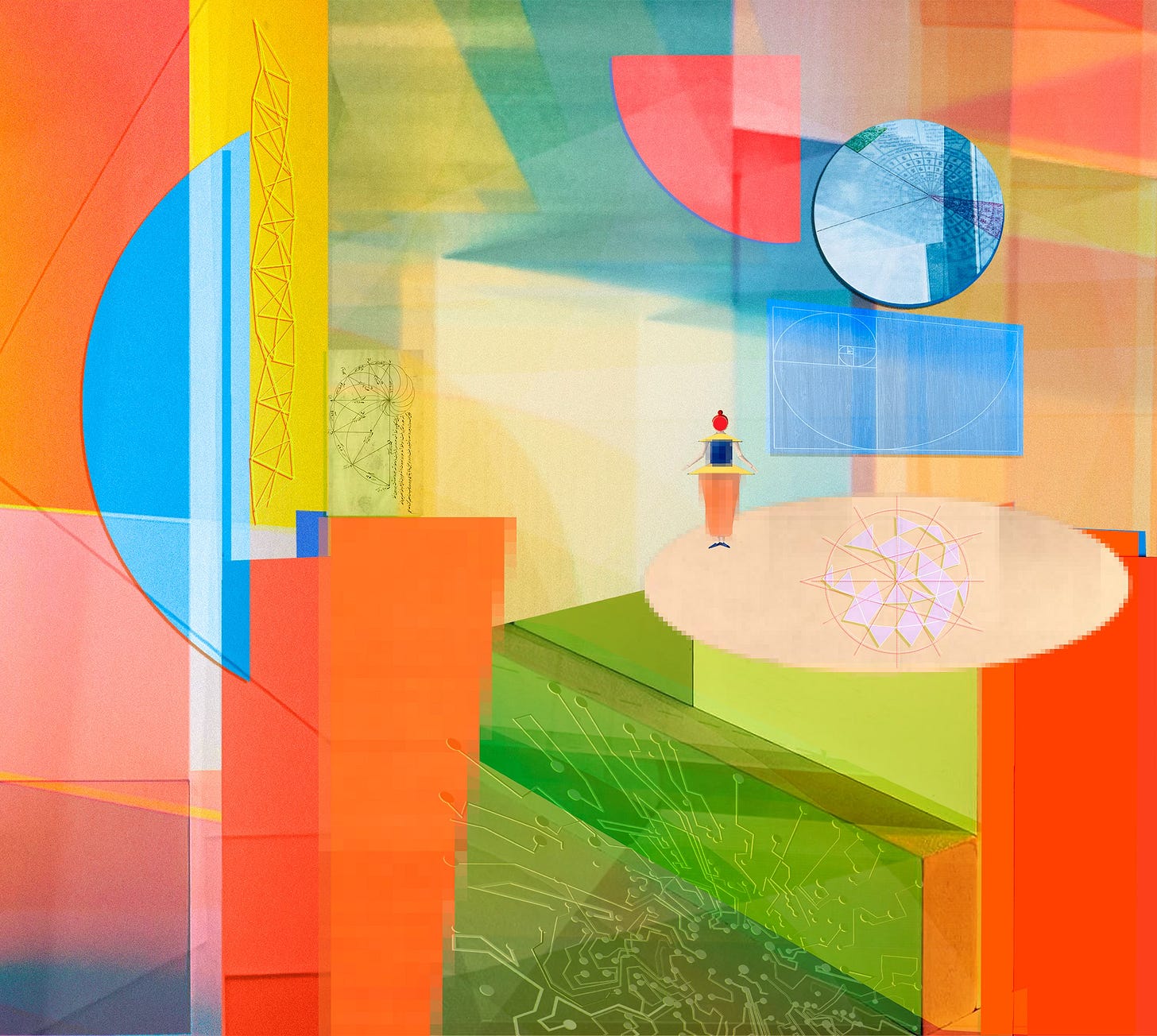
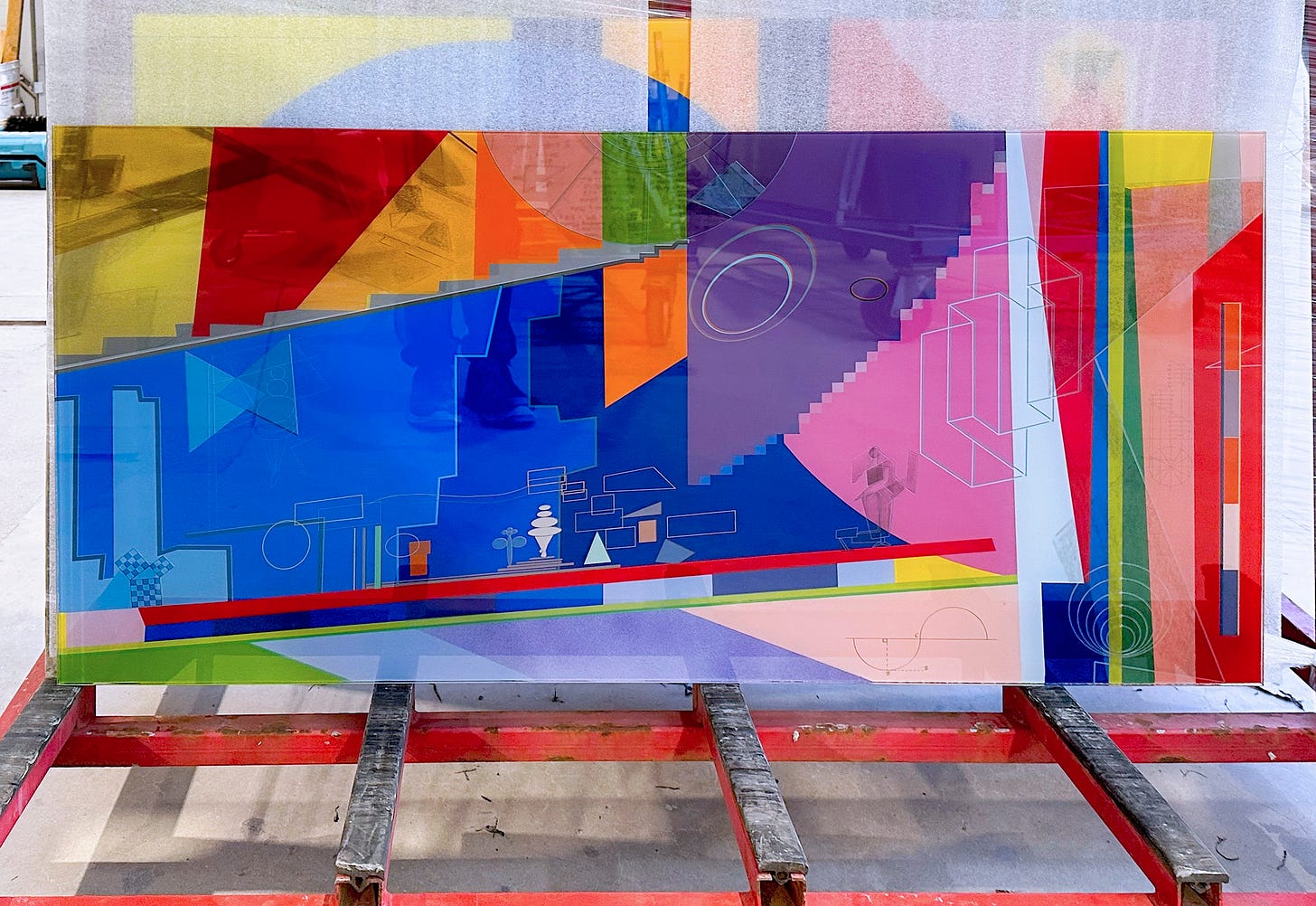


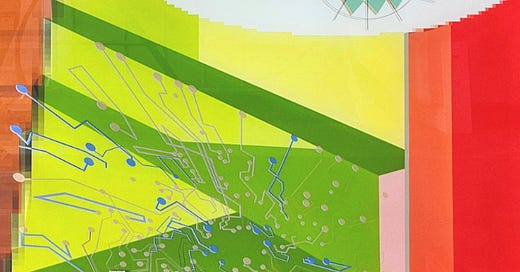


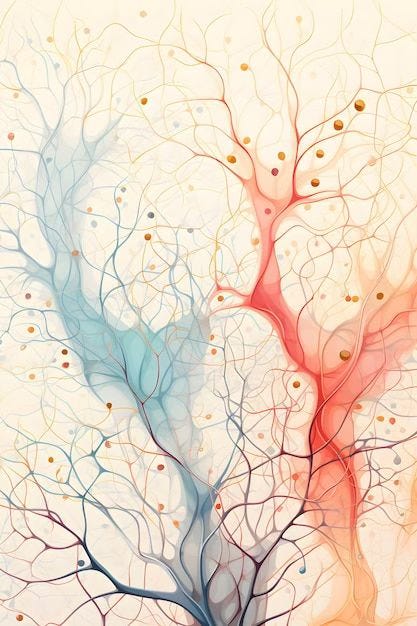
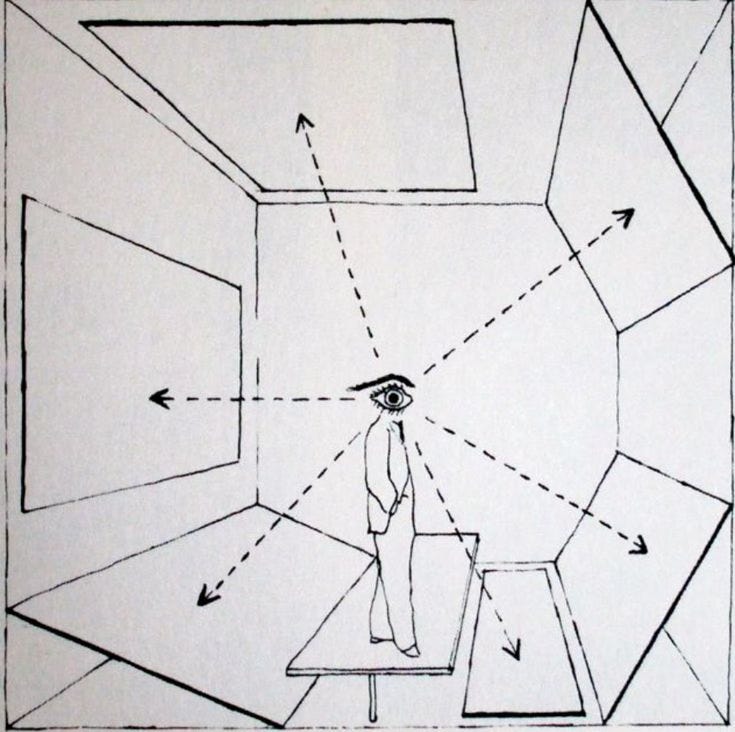


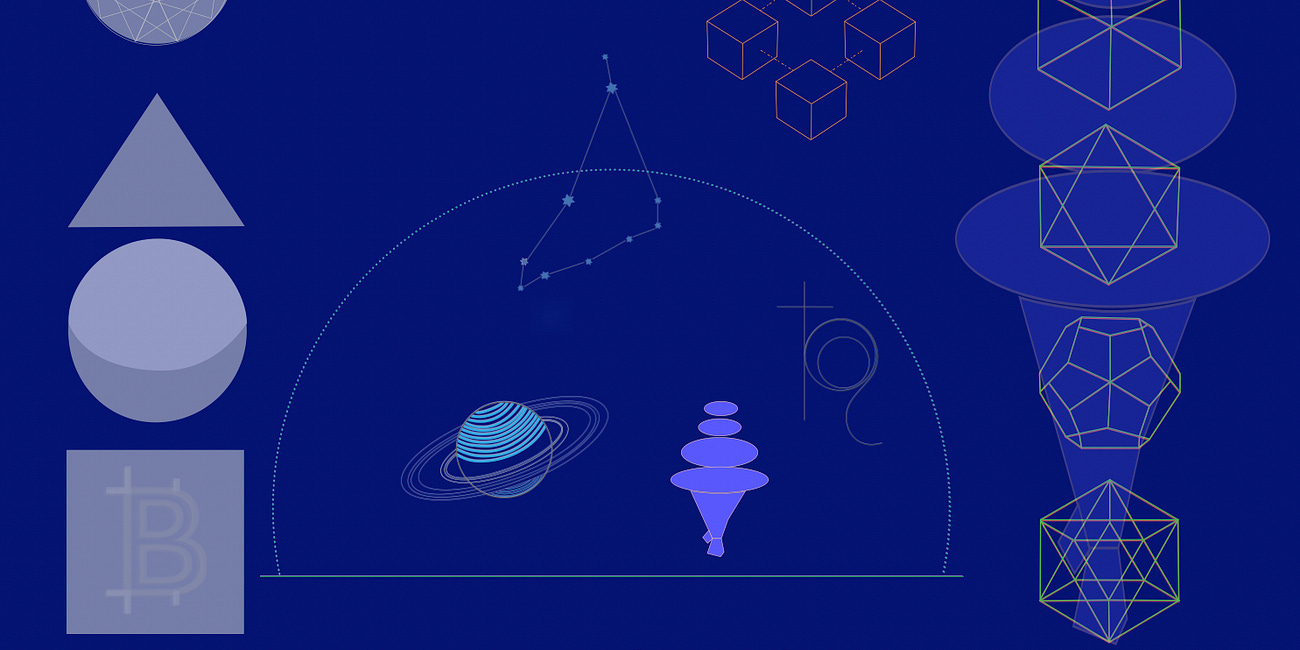





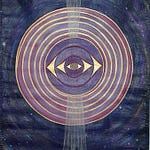


Share this post